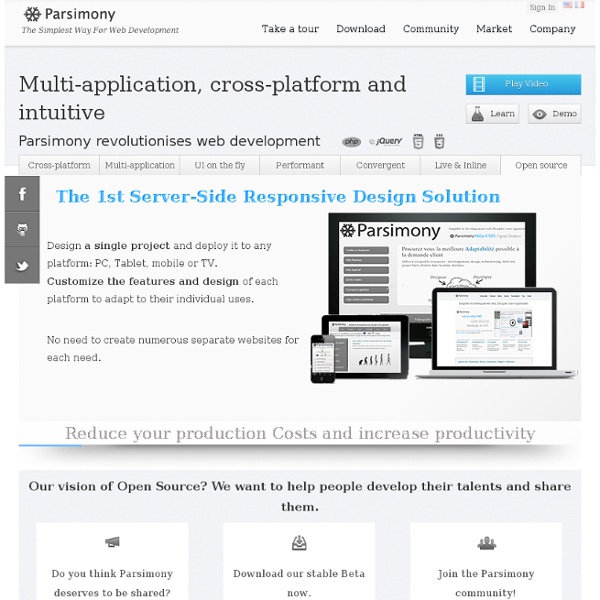



Responsive Web Design: What It Is and How To Use It Advertisement Almost every new client these days wants a mobile version of their website. It’s practically essential after all: one design for the BlackBerry, another for the iPhone, the iPad, netbook, Kindle — and all screen resolutions must be compatible, too. In the next five years, we’ll likely need to design for a number of additional inventions. In the field of Web design and development, we’re quickly getting to the point of being unable to keep up with the endless new resolutions and devices. Responsive Web design is the approach that suggests that design and development should respond to the user’s behavior and environment based on screen size, platform and orientation. The Concept Of Responsive Web Design Ethan Marcotte1 wrote an introductory article about the approach, “Responsive Web Design992,” for A List Apart. “Recently, an emergent discipline called “responsive architecture” has begun asking how physical spaces can respond to the presence of people passing through them.
PowerBASIC: Basic Compilers Taking Products You Know & Making Them Better with Reflex™ LCD Technology | Improv Electronics We recently had a Boogie Board fan send us a couple of amazing illustrations on his new Boogie Board Original 8.5! Dr. Mark Hom from Virginia writes, "Your product is amazing! The touch sensitive surface and stylus make it easy to draw lines of different thickness, unlike a pencil, pen, or brush. . . . The fact that you cannot go back on a stroke makes you commit and draw with confidence. Also, you cannot covet your latest masterpiece....just hit the button and move on to the next." Want to share your Boogie Board masterpiece with us?
How to lose weight (in the browser) And what if we got together a bunch of experts who work on large sites to create a definitive front-end performance guide? And not just one of those boring guides made for robots, what if we did something fun? What about getting together Briza Bueno (Americanas.com), Davidson Fellipe (Globo.com), Giovanni Keppelen (ex-Peixe Urbano), Jaydson Gomes (Terra), Marcel Duran (Twitter), Mike Taylor (Opera), Renato Mangini (Google), and Sérgio Lopes (Caelum) to make the best reference possible? That's exactly what we've done! And we'll guide you in this battle to create even faster sites. — Zeno Rocha, project lead. Of course it matters and you know it. There are three basic ways for you to include CSS or JavaScript on your page: 1) Inline: the CSS is defined inside a style attribute and the JavaScript inside an onclick attribute for example, in any HTML tag; 2) Embedded: the CSS is defined inside a <style> tag and the JavaScript inside a <script> tag; > Useful tools / References > References JavaScript
35 Best Responsive Framework for Web Design | HTML5 & CSS3 There are two types of frameworks front-end and backend. Frontend frameworks usually use for web design and layouts consist of a package made up of a structure of files and folders of standardized code (HTML, CSS, JS documents etc.) which are using to developed front-end design. Responsive frameworks have been around for last couple of years now and Responsive web design continues to become more widely practiced. Lots of talented designers and developers have jumped to the next generation of Responsive frameworks and boilerplates. Today’s I selected 35 best Responsive Frameworks for web design that will help you to make responsive design simple and easier. You may also like: Check out the list of 35 responsive frameworks for web design. What is a framework? A framework is a standardized set of concepts, practices and criteria for dealing with a common type of problem, which can be used as a reference to help us approach and resolve new problems of a similar nature. 1. Demo Download 2. 3. 4.
Letting users disable responsive layout It’s great that media queries allow us to adapt the layout of our sites to the users’ viewport size, a.k.a. Responsive Web Design. However, some argue that doing so comes with a (slight) risk of confusing some people that don’t expect viewport width to make the layout change as drastically as media queries allow. While I don’t think this affects a large number of people, it’s quite possible that people who do not know what responsive web design is (i.e. the vast majority of people) can be confused by a site looking radically different on their computer that on their tablet or smartphone. Bruce Lawson mentions an example of this in Turning off responsive web design, and I’ve heard other similar stories. A colleague mentioned another case when a responsive layout is not always ideal – client support. Despite having the feeling that it wouldn’t benefit a large number of people, implementing a switch to toggle a website’s responsiveness on and off isn’t really a lot of work. HTML and CSS
Choosing A Responsive Image Solution